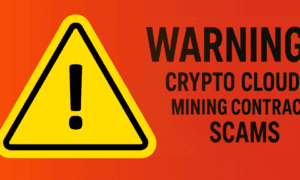Writing a press release can seem tough, especially for beginners. But with the right tips and tricks, you can easily create a clear and engaging press release that gets noticed. This guide will help you understand the important parts of a press release and how to write one that stands out.
Key Takeaways
- A press release is a short news story that shares important information about your business or event.
- Your headline should be catchy and include keywords to help people find your news online.
- The lead paragraph should answer the who, what, when, where, and why of your story.
- Make sure to include quotes and data in the body to make your release more trustworthy and interesting.
- Always end with a clear call to action and provide contact details for more information.
Understanding the Basics of a Beginner’s Press Release
Defining a Press Release
A press release is a short, official statement that shares news with the media. It’s a way for companies or individuals to announce something important, like a new product or an event. The goal is to get the media to share this news with the public. A well-written press release can help you reach a wider audience and create buzz around your announcement.
Importance of Press Releases
Press releases are crucial because they help shape how the public views your brand. They can attract attention from journalists and bloggers, leading to more coverage. This can boost your reputation and credibility. When done right, a press release can also drive traffic to your website, making it a valuable tool for marketing. Remember, keeping it short and complimentary by mentioning your position in the industry can make a big difference.
Common Misconceptions
Many people think that press releases are only for big companies or major events. However, any business or individual can benefit from them. Another misconception is that press releases are outdated. In reality, they are still a powerful way to communicate news, especially when combined with online platforms. Understanding these basics can help you use press releases effectively in your communication strategy.
Crafting a Compelling Headline
Grabbing Attention
A strong headline is your first chance to catch the reader’s eye. It should be interesting and make people want to read more. Think about what makes your story unique and try to express that in a few words. For example, a headline like “Real Estate Updates: How Firms Use Press Releases to Attract Investors” can spark curiosity and draw in readers.
Using Keywords Effectively
Incorporating relevant keywords into your headline is crucial. This helps your press release show up in search results, making it easier for people to find your news. For instance, using terms like “press releases” and “investors” can help connect your content with what people are searching for.
Avoiding Clickbait
While it’s important to be catchy, avoid misleading headlines that don’t reflect the content of your press release. Clickbait may get clicks, but it can damage your credibility. Instead, aim for a headline that is both engaging and honest about what the reader can expect. This builds trust and encourages readers to engage with your content.
Writing an Engaging Lead
What is a Lead?
A lead is the first part of your press release. It’s like the opening scene of a movie; it sets the stage for what’s to come. A strong lead grabs the reader’s attention and makes them want to read more. It should clearly state the main point of your press release and give a hint of the story behind it.
Elements of a Strong Lead
To create a strong lead, you need to include the most important details right away. This means answering the who, what, when, where, and why. Think of it as a mini-summary that gives readers a quick overview. For example, if you’re announcing a new product, mention what it is, when it will be available, and why it’s exciting. This helps to capture media attention and keeps the audience interested.
Common Mistakes to Avoid
One common mistake is being too vague. If your lead doesn’t provide enough information, readers may lose interest. Another mistake is using jargon or complicated language. Remember, your goal is to communicate clearly. Avoiding these pitfalls will help ensure your lead is effective and engaging, making it easier for your audience to understand the importance of well-crafted press releases.
Developing the Body of Your Press Release
Structuring Your Information
When writing the body of your press release, it’s important to organize your information clearly. Start with the most important details and then provide supporting facts. This way, readers can quickly grasp the main message. A well-structured release helps keep the audience engaged and informed.
Incorporating Quotes and Data
Adding quotes from key stakeholders can make your press release more credible and relatable. These quotes provide a personal touch and can help convey the significance of the news. Additionally, including relevant data can strengthen your message and provide context, making it easier for readers to understand the impact of your announcement.
Maintaining Clarity and Conciseness
It’s crucial to keep your writing clear and to the point. Avoid using jargon or overly complex sentences. Instead, aim for a straightforward style that communicates your message effectively. Remember, the goal is to inform and engage your audience without overwhelming them with unnecessary details. A concise press release is more likely to be read and shared, enhancing your brand’s visibility in a rapidly changing market.
Concluding Your Press Release
Summarizing Key Points
In the final part of your press release, it’s important to wrap up your message clearly. This means you should briefly restate the main points you made earlier. A good summary helps readers remember the essential details and understand the significance of your announcement.
Including a Call to Action
After summarizing, you should include a call to action. This tells your readers what you want them to do next. Whether it’s visiting your website, signing up for a newsletter, or contacting you for more information, a clear call to action guides them on their next steps.
Providing Contact Information
Lastly, don’t forget to provide your contact information. This is crucial for anyone who wants to reach out for more details or follow up on your announcement. Make sure to include your name, phone number, and email address so that interested parties can easily get in touch with you.
Optimizing for SEO
Using Relevant Keywords
When writing a press release, it’s important to include relevant keywords that relate to your topic. This helps search engines understand what your release is about. Think about what words people might use to find your information. By using these keywords naturally in your text, you can improve your chances of being found online.
Formatting for Readability
Good formatting makes your press release easier to read. Use short paragraphs and clear headings. This not only helps your audience but also makes it easier for search engines to scan your content. A well-structured release can keep readers engaged and encourage them to share your news.
Leveraging Links and Multimedia
Including links in your press release can guide readers to more information. You can also use multimedia elements like videos or images to make your release more appealing. However, make sure these elements are relevant and enhance your message. This can help you reach a wider audience and keep them interested in your content.
Distributing Your Press Release
Distributing your press release is a crucial step in getting your message out to the public. First, you need to share the link to your story and newsroom on your social media channels. This helps to reach a wider audience. Make sure to tag any people or brands mentioned in your release. This not only gives them credit but also encourages them to engage with your post. Additionally, ask related parties to like and share your content. This can significantly increase visibility and engagement. Remember, the more people who see your press release, the better your chances of it being picked up by media outlets and gaining traction online.
Wrapping It Up
In conclusion, writing a good press release is not as hard as it seems. By following the key points we discussed, you can create a press release that grabs attention and gets your message across clearly. Remember to keep it simple, focus on the main facts, and make sure it’s interesting. With practice, you’ll get better at it, and soon you’ll be able to share news that people want to read. So, start writing your press release today and watch how it can help your story reach a wider audience!



































